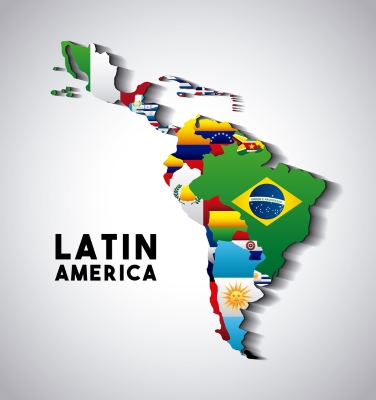Spanish is a beautiful language. It’s one of the easier languages to learn making it popular worldwide. Although there are slightly different dialects, if you’re fluent in one you can generally understand Spanish speaking people everywhere.

Some languages, such as French, have many different dialects. These dialects vary so much that communicating with someone from as little as one village away can be nearly impossible.
Let’s talk about some of the differences between the Spanish spoken in Spain and the Spanish spoken in Latin America.
– Spanish in Spain is simply known as Castellano (after the Castile region). In Latin America you’re more likely to hear it be called Español.
– Spanish in Spain when the letter “c” is followed by an “i” or an “e” and then a “z” it’s pronounced like the English “th”.
In Latin America, when the letter “c” is followed by an “i” or an “e” and then a “z” it’s pronounced like the English “s”.
Here are some examples of the differences in the words they use to describe the same thing.
– Spanish in Spain, banana is plátano.
In Latin America, banana is banano.
Spanish in Spain, car is coche.
In Latin America, car is carro or auto.
Spanish in Spain, computer is ordenador.
In Latin America, computer is computador/a.
Spanish in Spain, cute is mono/a.
In Latin America, cute is lindo/a.
Spanish in Spain, drive is conducir.
In Latin America, drive is manejar.
Spanish in Spain, firework is fuego artificial.
In Latin America, firework is pirotecnia.
Spanish in Spain, jeans is vaqueros.
In Latin America, jeans is simply jeans.
Spanish in Spain, juice is zumo.
In Latin America, juice is jugo.
Spanish in Spain, lipstick is pintalabios.
In Latin America, lipstick is labial.
Spanish in Spain, money is pasta.
In Latin America, money is plata or dinero.
Spanish in Spain, nice is majo/a.
In Latin America, nice is lindo/a.
Spanish in Spain, pen is bolígrafo.
In Latin America, pen is pluma or lapicero.
Spanish in Spain, TV is La televisión
In Latin America, TV is El televisor.
Spanish in Spain, sock is (la) media.
In Latin America, sock is (el) calcetín.
Spanish in Spain, mate is chaval or tío.
In Latin America, mate is cuate or amigo.
These are just a few of the differences between Spain and Latin America’s Spanish.
Another difference is that Latin American Spanish uses a lot more words and phrases from the English language than Spanish from Spain does.
Despite all the differences between the two, there’s an excellent chance that you’ll be able to converse in Spanish, in Spain or anywhere else the beautiful language is spoken. No matter which version or dialect of it you chose to learn.
Spanish, no matter the dialect, is a fun, beautiful language to learn. While it may not be “easy” per say, it is simpler than a lot of other languages out there, so if you’ve ever wanted to learn a second language Spanish would be an excellent choice!